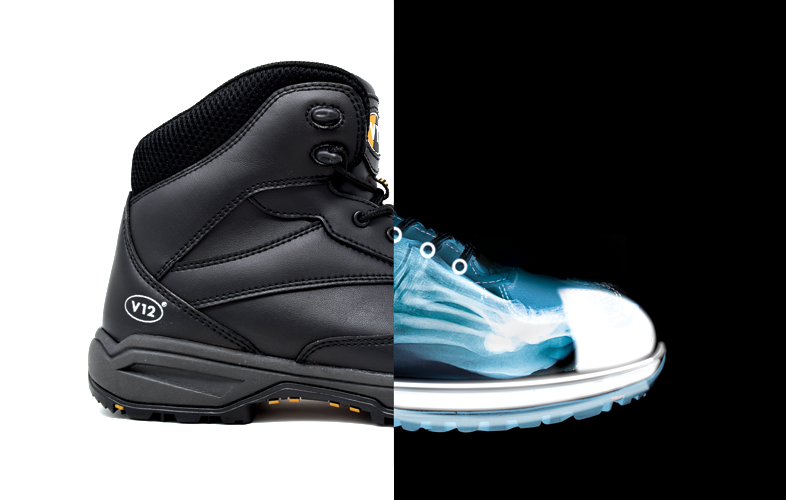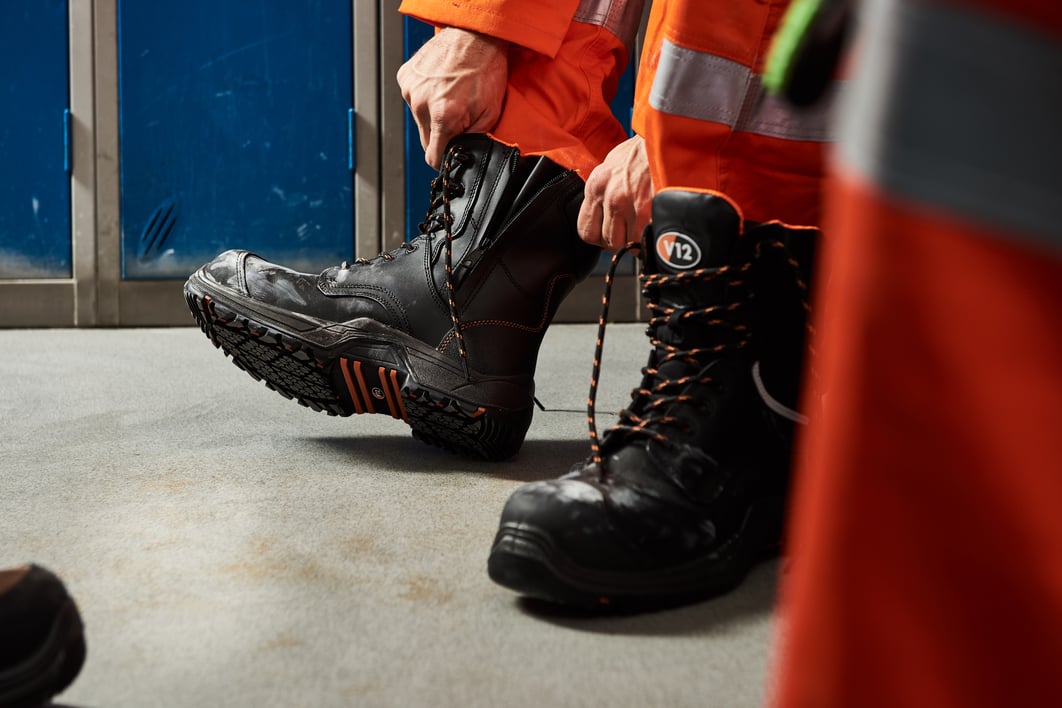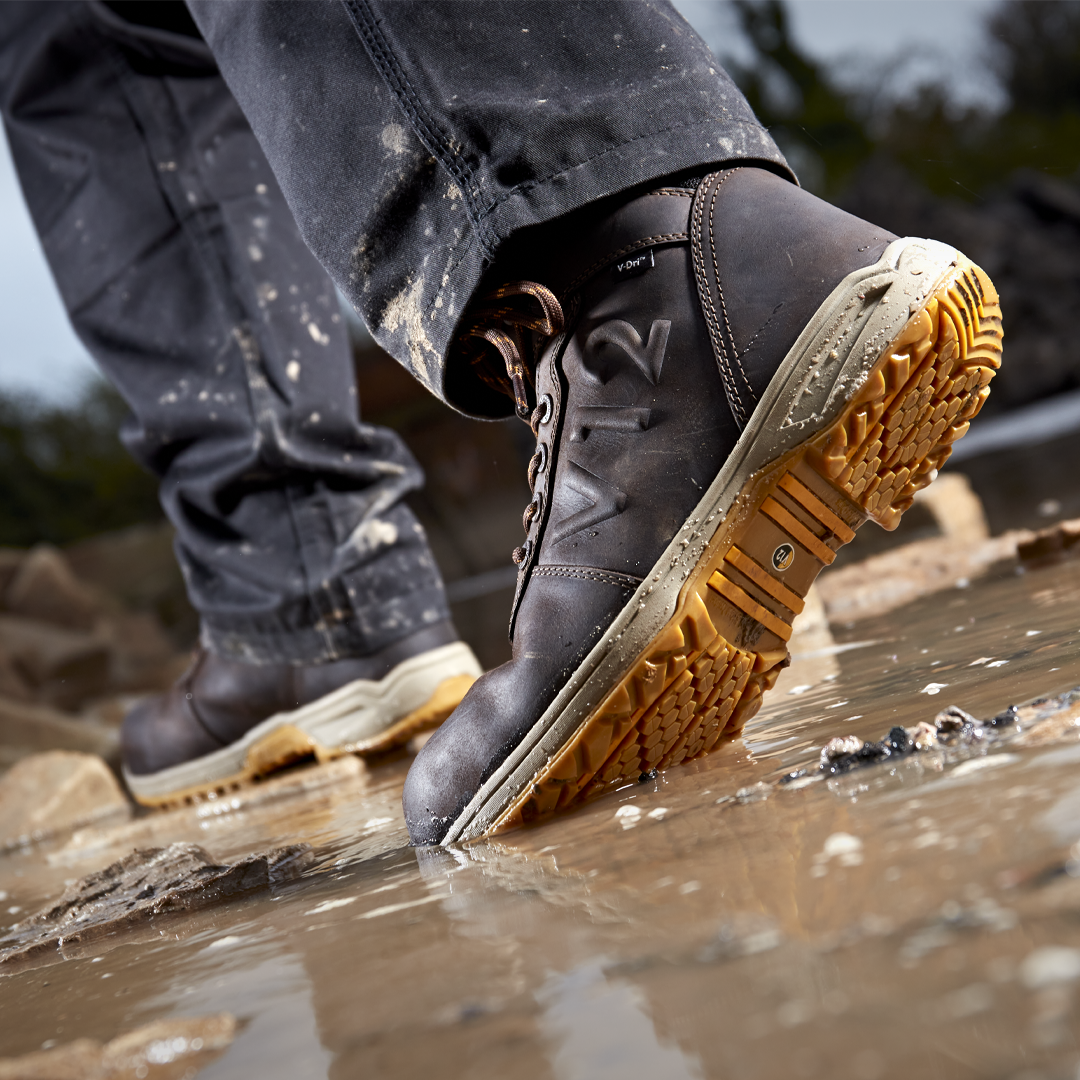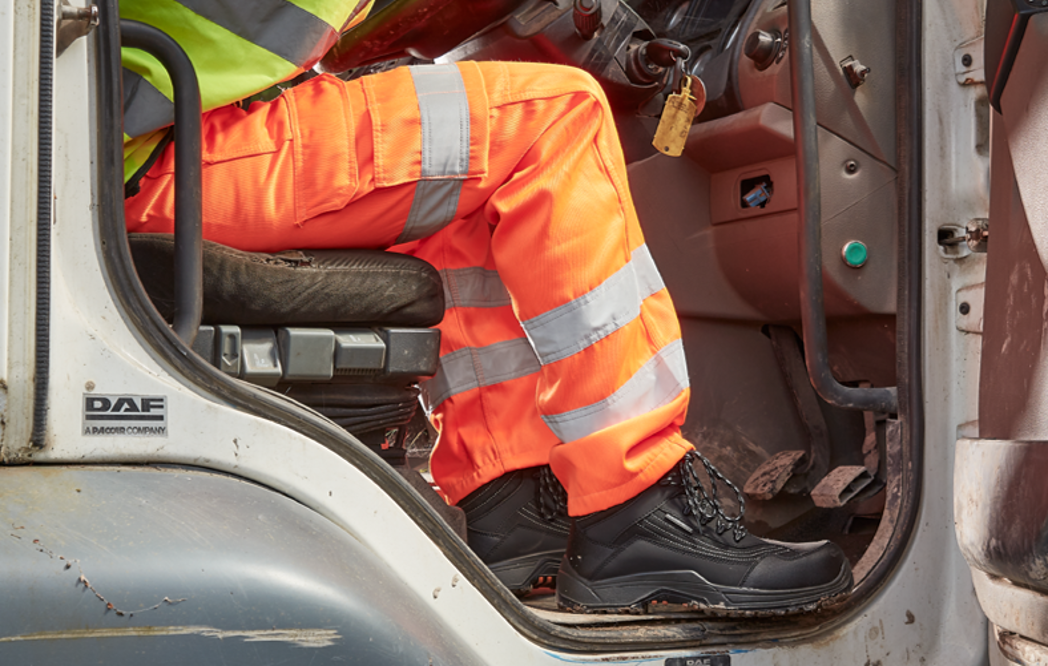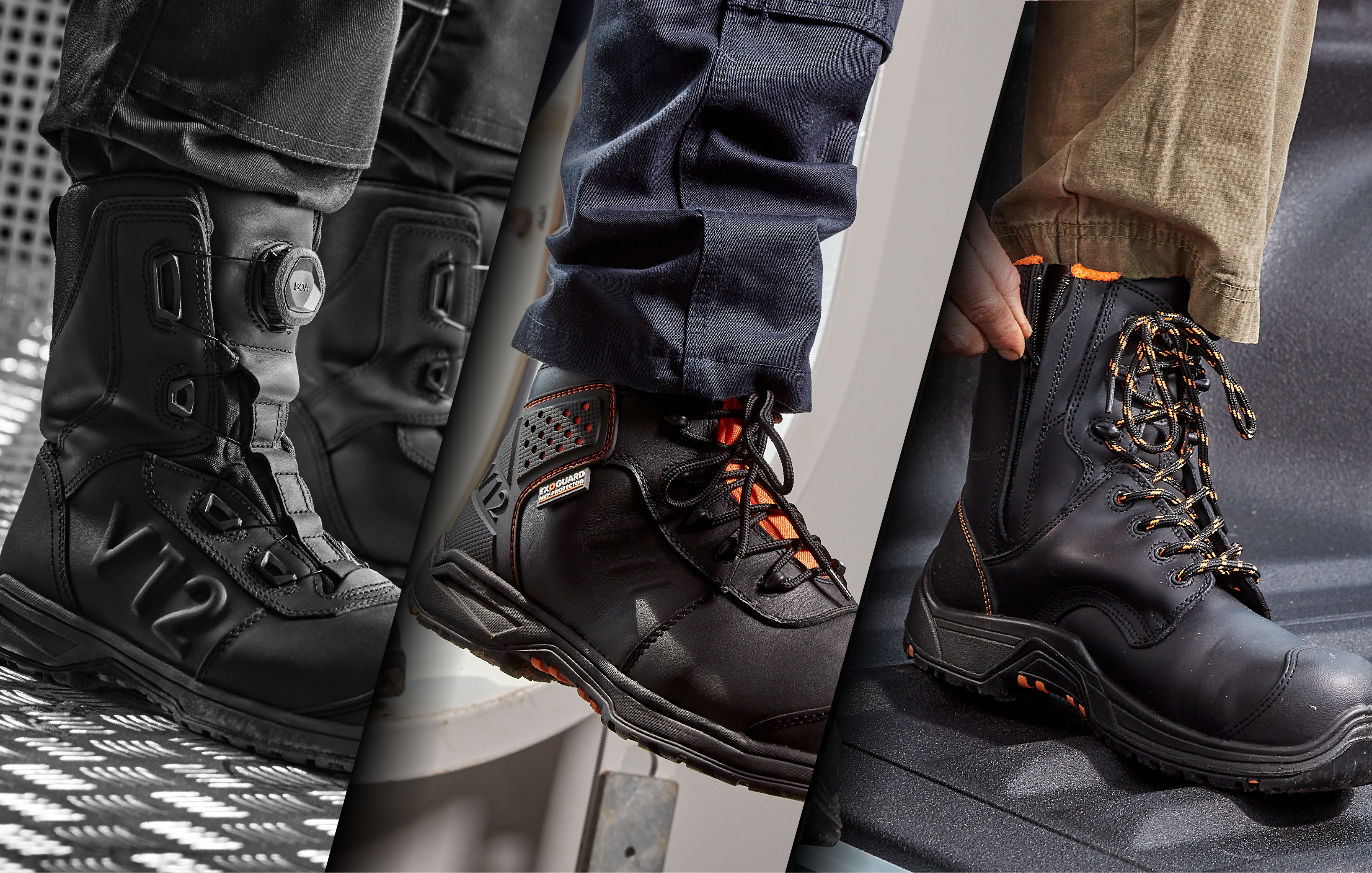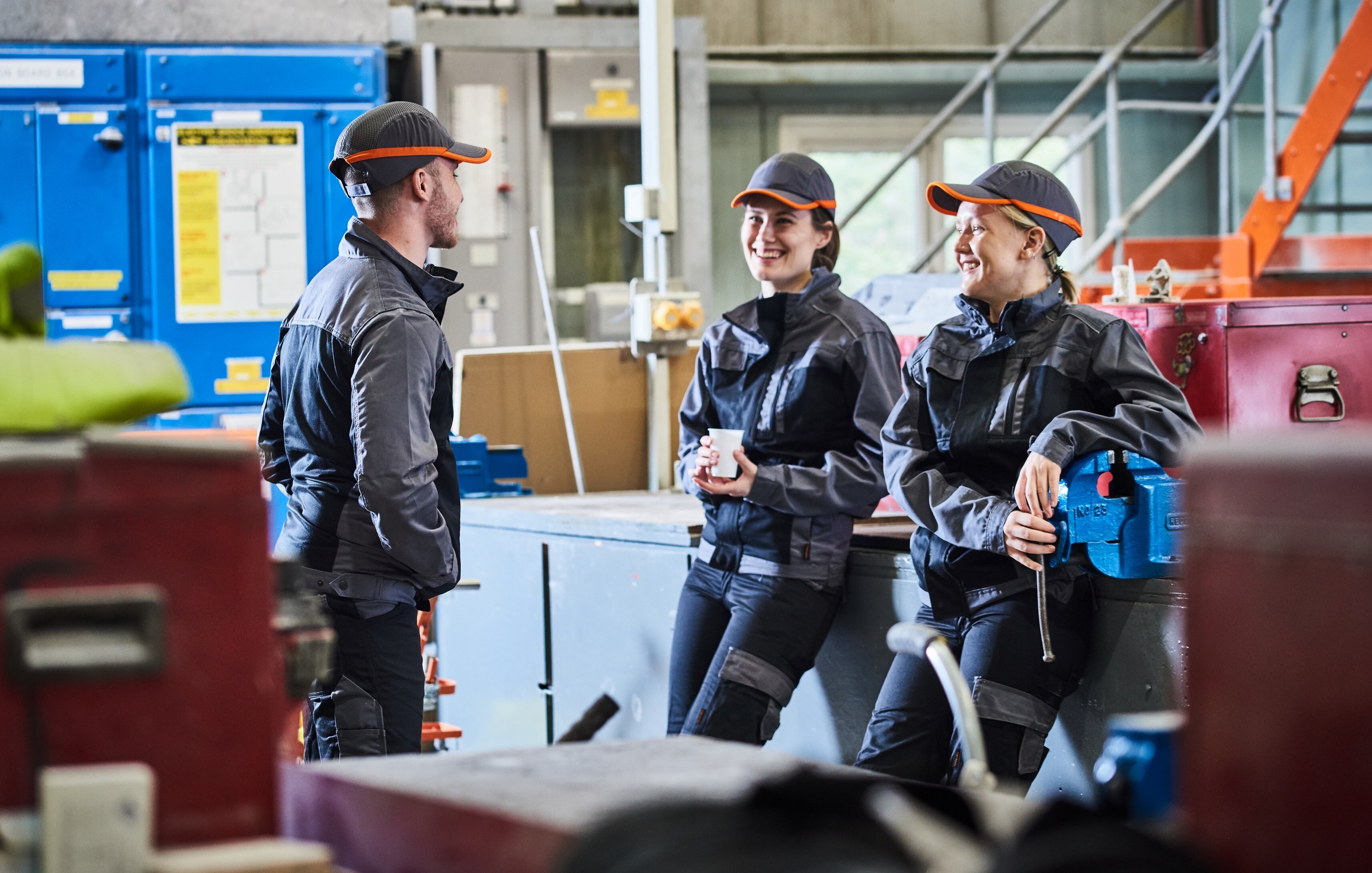Much like a car, a safety boot has a lot of hidden components. And while many of these features might not be visible - or look particularly important - they play a crucial role in keeping you protected and comfortable.
In this blog, we lift the leather and take a detailed look at what’s inside a safety boot. We’ll explore the components working overtime to keep your feet safe, so you can see how important it is to have good safety footwear on your feet when working around hazards.
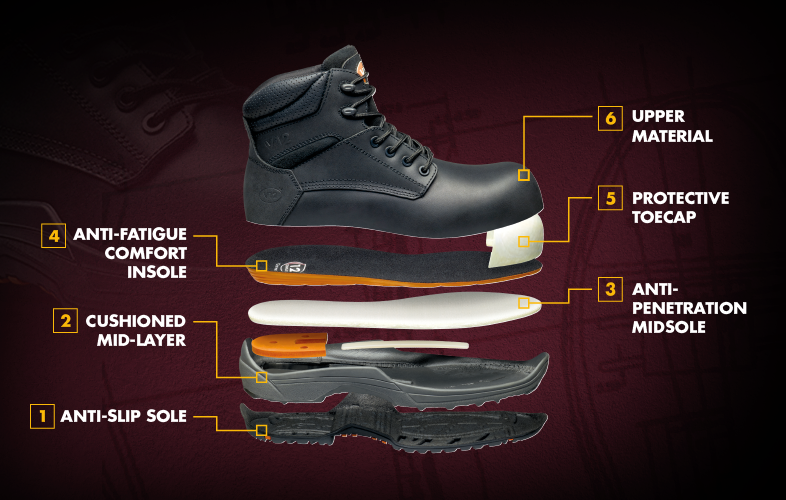
1. ANTI-SLIP SOLE
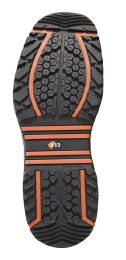
A crucial aspect of a safety boot, a slip-resistant sole is designed to give the wearer a greater grip on slippery surfaces. The outsole of any safety boot must provide a degree of slip-resistance to conform with European safety footwear standards EN IS0 20345.
SO FOR YOU, THAT MEANS:
The chances of slipping and having a painful or even long-term injury is reduced. Afterall, the sole of a boot is very similar to what tyres are to a car: the only contact with the ground, so they need to provide reliable grip to prevent accidents. HSE statistics show that last year, slips, trips and falls accounted for 30% of all non-fatal accidents in the workplace in the UK.
NO SLIP, ALL GRIP
V12 Footwear has developed 2 different and highly innovative types of slip-free sole units based on the wearer’s surface and environment.
Find out more about our innovative IGSTM and STSTM sole units here.
Pictured: The VR620.01 Avenger IGS keeps its wearer stable and slip-free with its durable IGSTM sole unit.
2. CUSHIONED MIDLAYER

The midlayer of a safety boot provides extra comfort by adding an element of shock-absorption, but it is also important as it holds the boot’s shank. The shank may not look like a very technical component, but this small piece of material allows the boot to flex in the correct way, reducing foot fatigue and increasing stability.

Pictured: the shank - a small component with a big job
SO FOR YOU, THAT MEANS:
If you're walking on hard surfaces like paving stones and Kennedy Grating or uneven ground such as mud or ballast, you stay comfortable and firm-footed. The midlayer cushions your feet from the impact of walking, while the shank maintains the stability in the boot, and therefore your foot. Without a shank, a boot would flex far more than it should, and put stress on the bones in your feet.
Safety note: The shank is a component that some manufacturers may remove from production to save cost, because if the shank isn’t inserted, less raw material and less labour is used during production. And because the wearer can’t see inside the mid-layer, it’s difficult to tell if the shank is missing. Not something you need worry about with V12 – all our footwear features a strong and supportive shank to ensure our wearers stay stable every step of the way.
3. ANTI-PENETRATION PROTECTIVE MIDSOLE
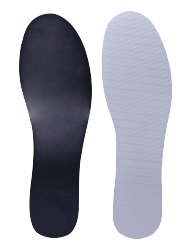 Sitting between the midlayer and the insole, the anti-penetration midsole offers underfoot protection from sharp objects. To meet this standard the footwear must be able to resist a penetration force of 1100 Newtons. Protective midsoles can be steel, but many wearers opt for composite midsoles as they are lighter and don’t conduct the heat or cold.
Sitting between the midlayer and the insole, the anti-penetration midsole offers underfoot protection from sharp objects. To meet this standard the footwear must be able to resist a penetration force of 1100 Newtons. Protective midsoles can be steel, but many wearers opt for composite midsoles as they are lighter and don’t conduct the heat or cold.
SO FOR YOU, THAT MEANS:
If you step on a nail sticking up from a piece of wood, or a screw lying around on site, a midsole is the barrier stopping it piercing your foot. Stepping on a sharp object with no midsole will almost certainly be a painful. See for yourself here.
4. ANTI-FATIGUE COMFORT INSOLES
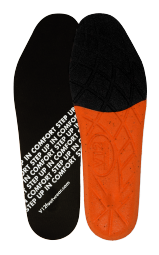 Comfort and safety aren’t separate things. In fact, they are very much interlinked. An uncomfortable and unsupported foot can be a distraction, which can easily lead to a loss of safety focus. Furthermore, lack of support can lead to foot pain such as Plantar Fasciitis and joint misalignment, which can cause knee, hip and back problems. So, a supportive, cushioned insole can make a huge difference to health and safety.
Comfort and safety aren’t separate things. In fact, they are very much interlinked. An uncomfortable and unsupported foot can be a distraction, which can easily lead to a loss of safety focus. Furthermore, lack of support can lead to foot pain such as Plantar Fasciitis and joint misalignment, which can cause knee, hip and back problems. So, a supportive, cushioned insole can make a huge difference to health and safety.
Our high-performing VS150 Energyse II insoles have been designed with comfort, safety and durability at the fore, with shock-absorbing open-cell foam and moisture-wicking lining.
SO FOR YOU, THAT MEANS:
These insoles aren’t just comfortable, they’re comfortable time and time again, because the foam will return to its shape after use, ready to offer cushioning and support with every wear. Finally, the lining reduces sweat, so they will help keep your feet dry and free from pain and irritation.
5. PROTECTIVE TOECAP
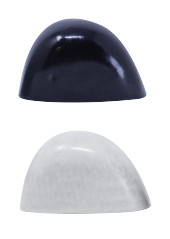 Perhaps the most well-known of safety features, the toecap is a mandatory feature of a safety boot. To conform with EN ISO 20345, the toecap must be able to withstand a 200 Joule impact. Like protective midsoles, toecaps can be made from steel as well as non-metal materials such as composite.
Perhaps the most well-known of safety features, the toecap is a mandatory feature of a safety boot. To conform with EN ISO 20345, the toecap must be able to withstand a 200 Joule impact. Like protective midsoles, toecaps can be made from steel as well as non-metal materials such as composite.
SO FOR YOU, THAT MEANS:
You can focus on the job without worrying about your feet. Falling objects are a universal hazard in safety critical jobs like construction and agriculture, and a toecap will protect your piggies in the event of an accident.
Trainers? Just say no...
Toes are small bones, so they can break easily - and they’re vulnerable because they stick out beyond the body line, leaving them an easy target for a dropped weight or falling piece of machinery. Unfortunately, a lot of people working in hazardous environments such as building sites can still be found wearing non-safety trainers. They might be comfortable, but after their foot has been on the receiving end of a concrete block or crushed by a vehicle with an inattentive driver, that comfort will be very short-lived...
Watch the video below to find out more about why it’s so crucial to wear safety boots on site.
UPPER MATERIAL
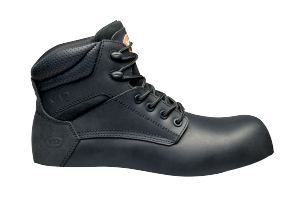 The upper of a work boot has a large part to play in both safety and comfort. The type of material used in an upper can vary depending on the different ways the leather is cut and treated, and of course safety boot uppers can also be made from synthetic or ‘non-leather’ materials.
The upper of a work boot has a large part to play in both safety and comfort. The type of material used in an upper can vary depending on the different ways the leather is cut and treated, and of course safety boot uppers can also be made from synthetic or ‘non-leather’ materials.
For example, full grain leather (the highest quality available) offers natural water and tear resistance, because no part of the leather is sanded down or split.
Alternatively, some wearers opt for synthetic uppers in their safety boots such as microfibre, as this type of material can provide good abrasion and chemical resistance.
Furthermore, because synthetic material is non-leather, it’s vegan-friendly, so perfect for wearers who want to avoid animal products in their work wear.
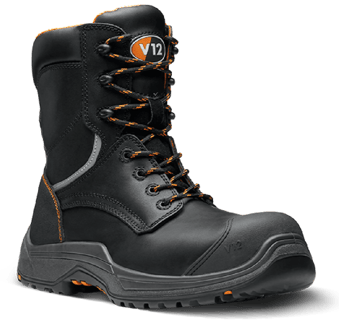
Do you want to find out more about the different types of uppers used in safety boots? Learn everything you need to know in our blog here.
Pictured: V12’s rigger boot VR620.01 Avenger IGS is made from full grain leather giving it natural water resistance, making it highly suited for working in wet conditions.
SPECIALISED COMPONENTS
Sometimes a particular working environment or type of hazard will require additional or specialised safety components.
WATERPROOF LINING
Safety isn’t just about protection from impact or slips. Wet feet can have a very damaging impact on health ranging from blistering, swelling to athlete's foot - and left untreated, these ailments can develop into far more serious issues such as blood vessel and tissue damage. A waterproof lining is an essential feature of a safety boot if the wearer works in consistently wet environments.
Pictured: V2130 Lynx IGS from The Lynx range features the V-Dri, V12’s highest performing waterproof membrane to date. Find out more on our innovations page here.
View our waterproof range here to find the best boots for dry feet.
METATARSAL PROTECTION
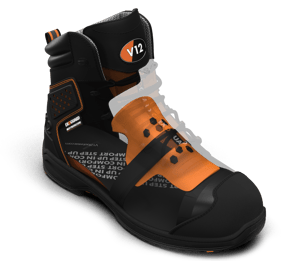 Metatarsals are the long bones above your toes connecting to your ankles. So, a met boot is a boot designed to protect these bones.
Metatarsals are the long bones above your toes connecting to your ankles. So, a met boot is a boot designed to protect these bones.
People who work in industries that involve heavy rolling objects like drums, wheels or drain covers will often wear boots with a metatarsal guard.
The V2180 Invincible IGS is V12’s next-level protection met boot. Its patented ExoGuardTM protection system (pictured) features an incredibly strong carbon strap arching over the middle of the foot and safeguarding the metatarsals, plus a highly effective shock absorbing PU pad.
See more of Invincible's industry-leading ExoGuardTM system here.
WORKING HARD FOR YOU
So, whether it’s a tiny plastic shank, a chunky wide-lugged outsole, a super tough composite midsole or the soft cushioning of an insole, a safety boot’s components all carry out equally important jobs. You might need simple toecap and midsole protection, or you might require more specialised styles – but the key thing to remember is that safety isn’t just impact protection: equally vital is the right grip to avoid slips, and the right comfort and fit to enjoy good foot health.
And there’s no doubt that in a V12 boot, you can have all 3, because the components and materials will all work as hard as they can, so your feet don’t have to.
With V12 Footwear's Boot Finder, simply tell us what you need from your safety boots - for example, indoor or outdoor grip, male or female fit, met, midsole or ankle protection - and in a few clicks, we'll show you our expert recommendation.
Click below and find your perfect pair.

